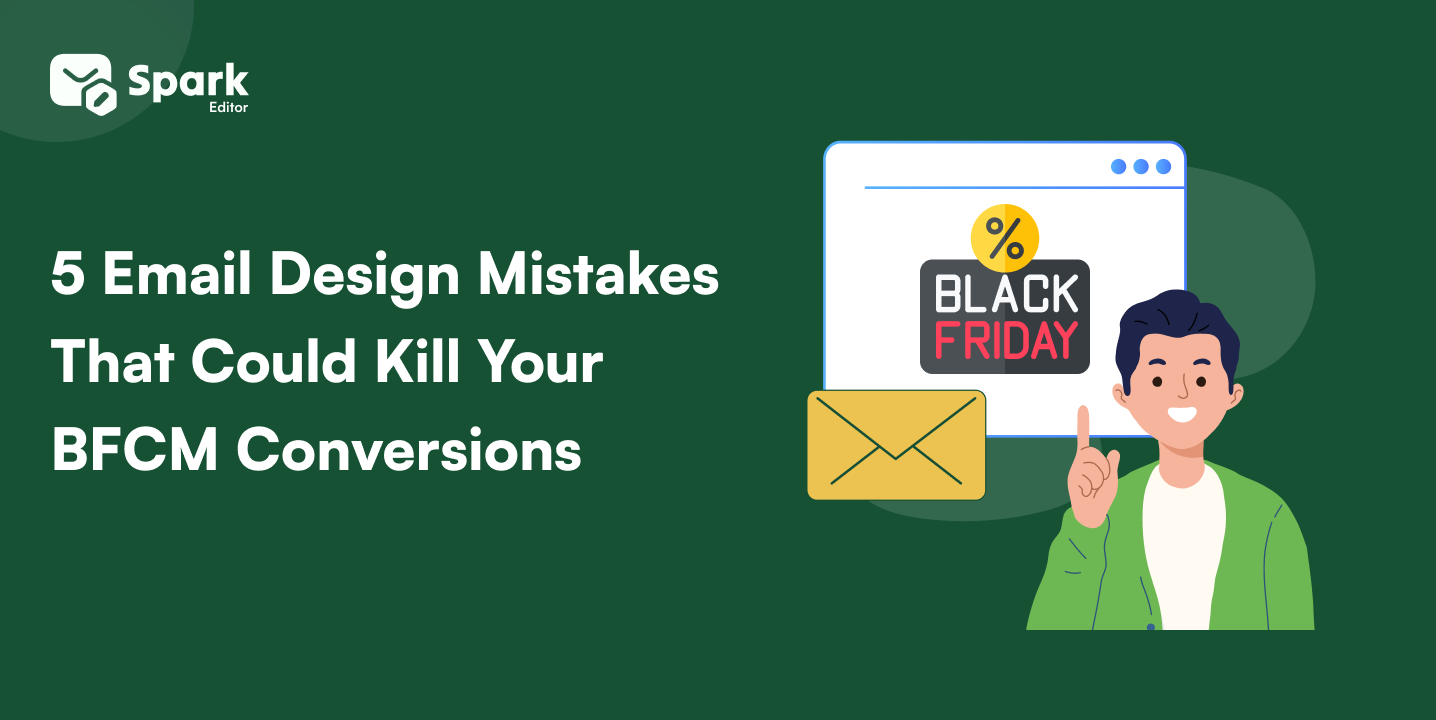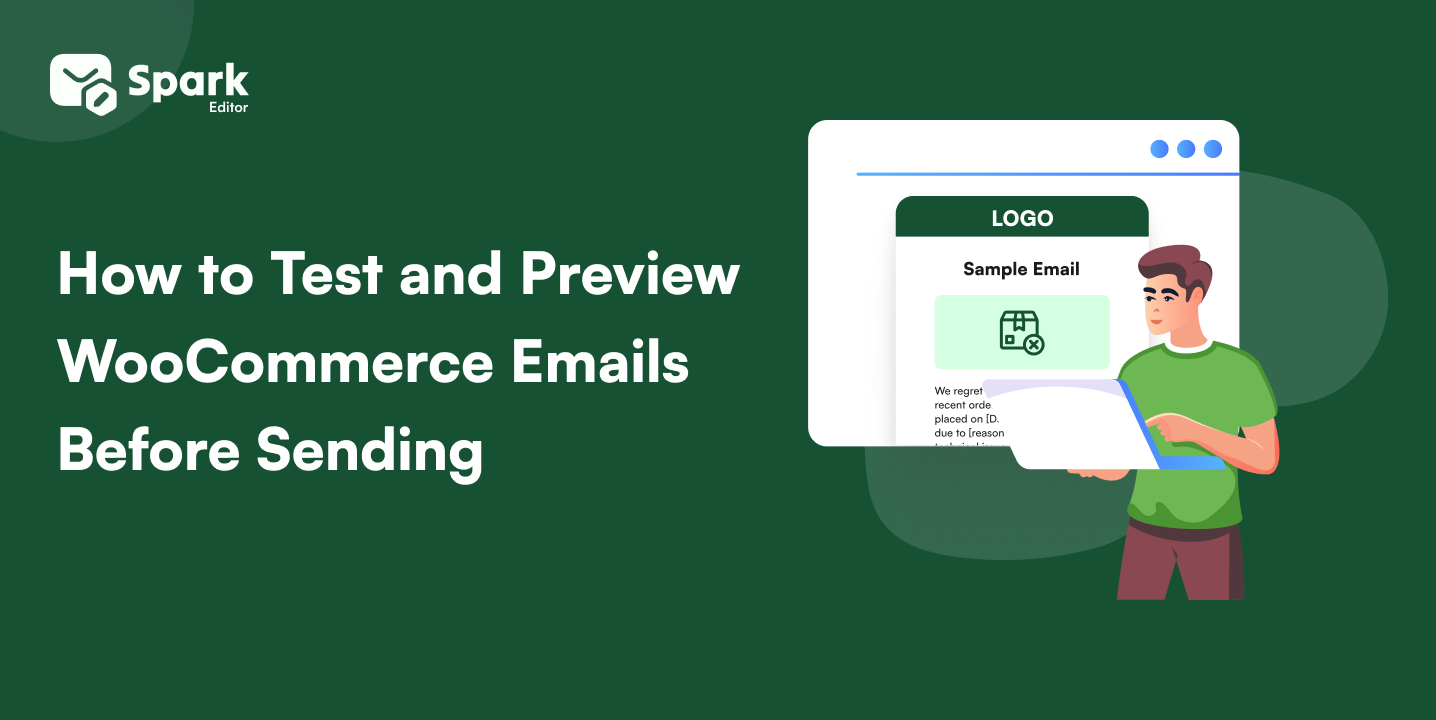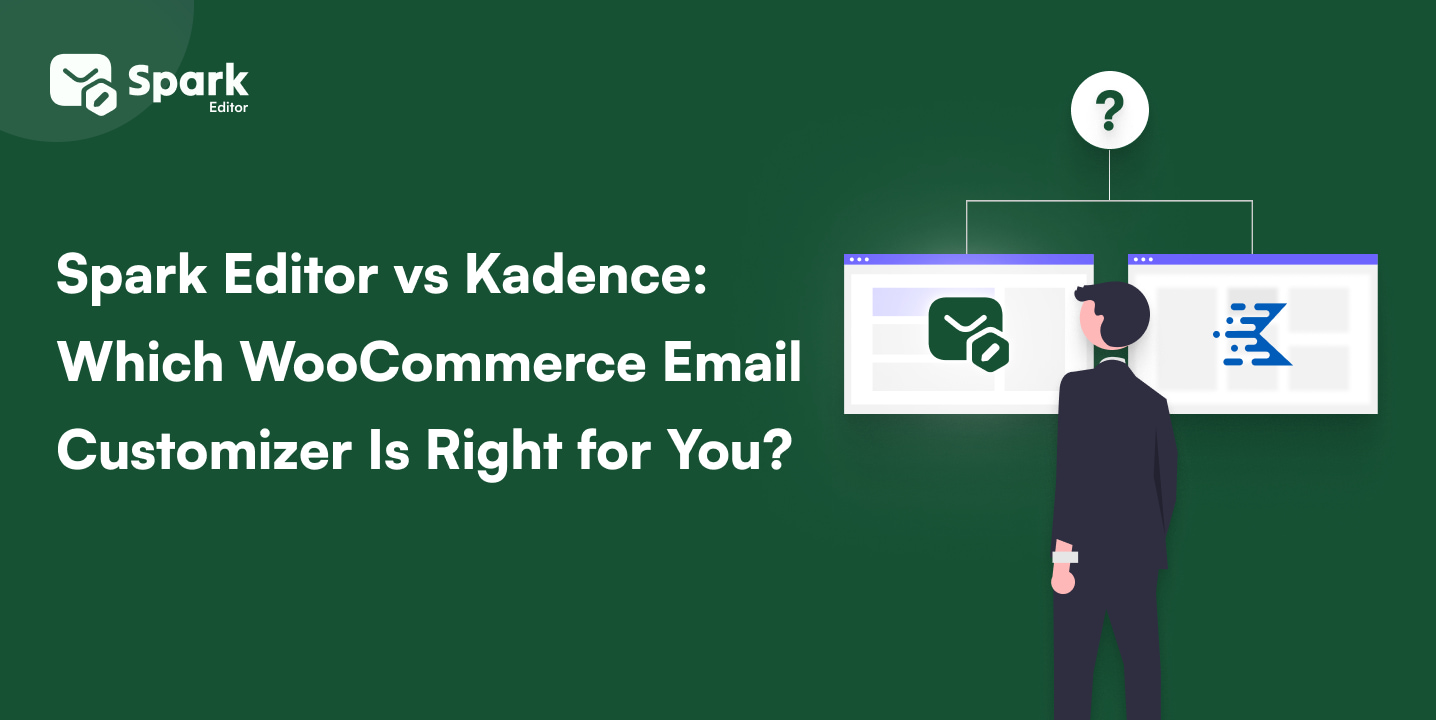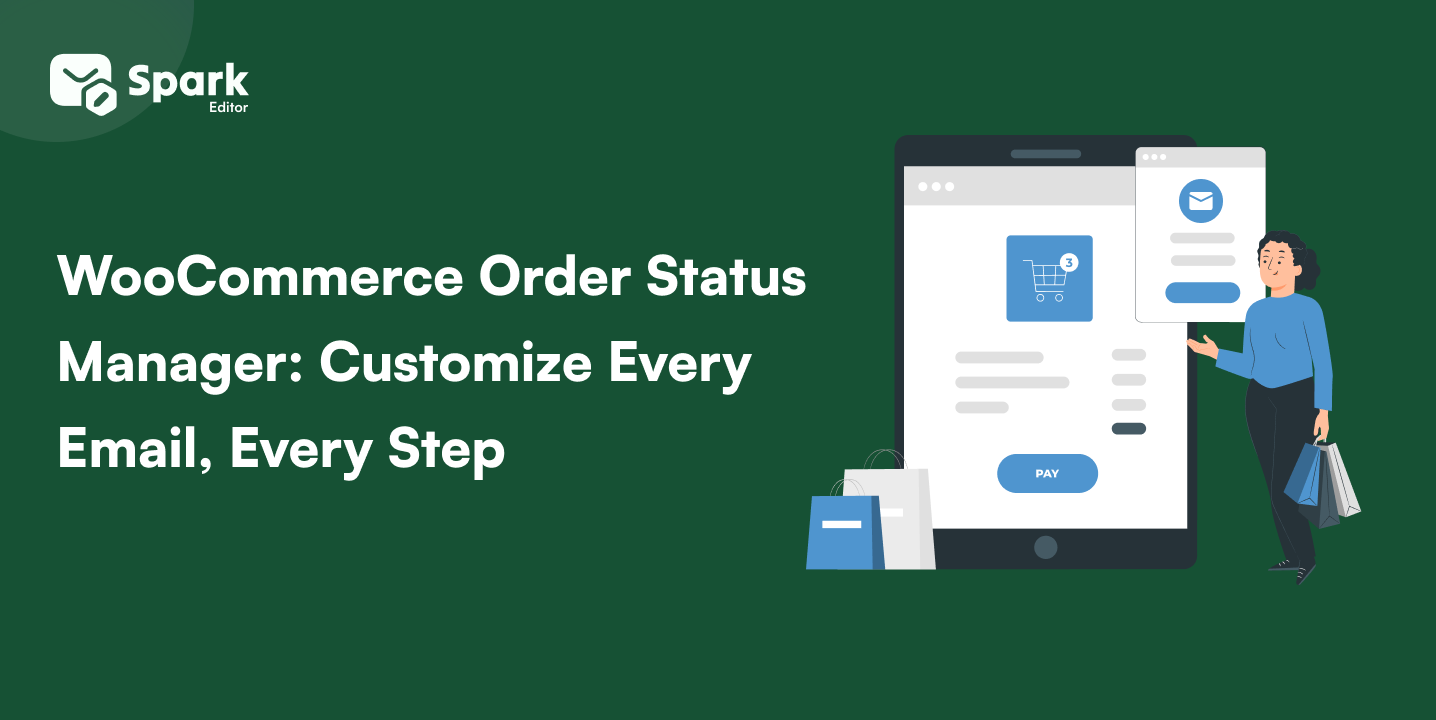
5 Email Design Mistakes That Could Kill Your BFCM Conversions
Black Friday and Cyber Monday (BFCM) are the biggest shopping events of the year. In 2025, Black Friday falls on Novem ber 29 and Cyber Monday on December 2. For
Tired of customers browsing your store but never completing a purchase? Abandoned carts, low repeat sales, and poor engagement can hurt your WooCommerce business. Without the right email strategy, you’re missing out on revenue and loyal customers.
Email marketing isn’t just about sending newsletters–it’s a powerful tool to recover lost sales and build long-term relationships. With personalized emails, automation, and strategic follow-ups, you can turn one-time buyers into repeat customers. Let’s dive into seven essential WooCommerce email marketing practices to drive real growth.
Enhance your email design and improve conversions with Spark Editor.
WooCommerce email marketing refers to the practice of using email campaigns to engage customers, boost sales, and build brand loyalty for your WooCommerce store. It involves sending automated and targeted emails such as transactional emails (order confirmations, shipping updates), promotional campaigns, abandoned cart recovery emails, and personalized recommendations.
By leveraging customer data, segmentation, and automation tools, WooCommerce email marketing helps store owners nurture leads, recover lost sales, and drive repeat purchases effectively.
Personalization is key to making your emails stand out in a crowded inbox. Use customer data to tailor your WooCommerce email marketing campaigns to individual preferences and behaviors. This can include:
Tip: Use dynamic content blocks in your email templates to automatically insert personalized information for each recipient. This will enhance your email customization efforts and make your WooCommerce email marketing more effective.
Tools like WooCommerce Email Customizer can help you create visually appealing and personalized email templates without needing any coding skills.
Transactional emails, such as order confirmations and shipping notifications, have high open rates because customers expect them. Make the most of these emails by including:
Tip: Ensure your transactional emails are mobile-friendly and visually appealing to enhance the customer experience and drive better customer engagement. Use responsive design templates to ensure emails look good on all devices.
Abandoned cart emails are a powerful tool for recovering lost sales. Set up automated emails to remind customers of the items they left in their cart and offer incentives, such as discounts or free shipping, to encourage them to complete their purchase. This is a vital component of your WooCommerce email marketing efforts.
Tip: Use urgency and scarcity tactics, like limited-time offers, to motivate customers to act quickly and improve your conversion rate optimization. For example, offer a discount that expires within 24 hours to create a sense of urgency.
Segmenting your email list allows you to send targeted messages to specific groups of customers based on their interests, purchase history, and engagement levels. This can lead to higher open rates, click-through rates, and conversions. Email segmentation is essential for effective WooCommerce email marketing.
Tip: Use WooCommerce’s built-in segmentation tools or integrate with email marketing platforms like Retainful for advanced segmentation options. This will help you create more personalized emails and improve your overall email customization.
For example, you can segment customers based on their purchase frequency, average order value, or product categories they are interested in.
Automated email campaigns save time and ensure consistent communication with your customers. Set up the following types of automated emails to keep your customers engaged throughout their journey:
Tip: Use WooCommerce plugins like Retainful to create and manage automated email workflows easily. This will help you streamline your email marketing efforts and improve customer engagement.
Automating these processes ensures that no customer is left behind and that your communication is timely and relevant.
Regularly review your email analytics to understand what’s working and what’s not. Track metrics like:
Tip: Use A/B testing to experiment with different subject lines, email content, and send times to improve performance. This will help you refine your email customization and enhance your overall WooCommerce email marketing efforts.
For example, test different subject lines to see which one resonates better with your audience.
Incorporate customer reviews and testimonials into your emails to build trust and credibility. Highlight positive feedback and success stories to encourage new customers to make a purchase. Leveraging customer reviews is an effective way to boost your WooCommerce email marketing campaigns.
Tip: Use WooCommerce review plugins to collect and display customer reviews in your emails. This will help you build trust with your audience and drive better conversion rates.
For example, include a section in your emails dedicated to customer testimonials and ratings.
Design professional WooCommerce emails that boost engagement with Spark Editor.
WooCommerce email marketing isn’t just about sending emails–it’s about delivering the right message at the right time to the right customer. From personalization to automation, each strategy helps boost engagement, recover lost sales, and build customer loyalty.
By implementing these seven essential practices, you can create high-converting email campaigns that drive consistent revenue. Start optimizing your email marketing today and turn your WooCommerce store into a powerhouse of growth!
It depends on your audience and the type of emails you send. Transactional emails should be sent immediately after an action, while promotional emails can be sent weekly or bi-weekly. Always monitor engagement metrics to adjust your email frequency.
Ensure your emails are relevant by using segmentation, personalization, and value-driven content. Avoid sending too many emails and always provide an easy way for customers to manage their preferences.
Use a series of reminder emails with personalized messaging, offer incentives like discounts or free shipping, and create urgency by setting a time limit on special offers.
Some of the best tools for automation include Retainful, Mailchimp, Klaviyo, and Omnisend. These tools help create workflows for abandoned carts, welcome emails, and follow-ups.
Track key metrics such as open rates, click-through rates, conversion rates, and unsubscribe rates. A/B testing different subject lines, content, and send times can also help optimize your email performance.

Black Friday and Cyber Monday (BFCM) are the biggest shopping events of the year. In 2025, Black Friday falls on Novem ber 29 and Cyber Monday on December 2. For

What if the very first email your customer sees after placing an order looks broken

WooCommerce comes with built-in transactional emails for order confirmations, shipping updates, and customer notifications. While

Imagine walking into a restaurant, placing your order, and then… silence. No updates, no “your